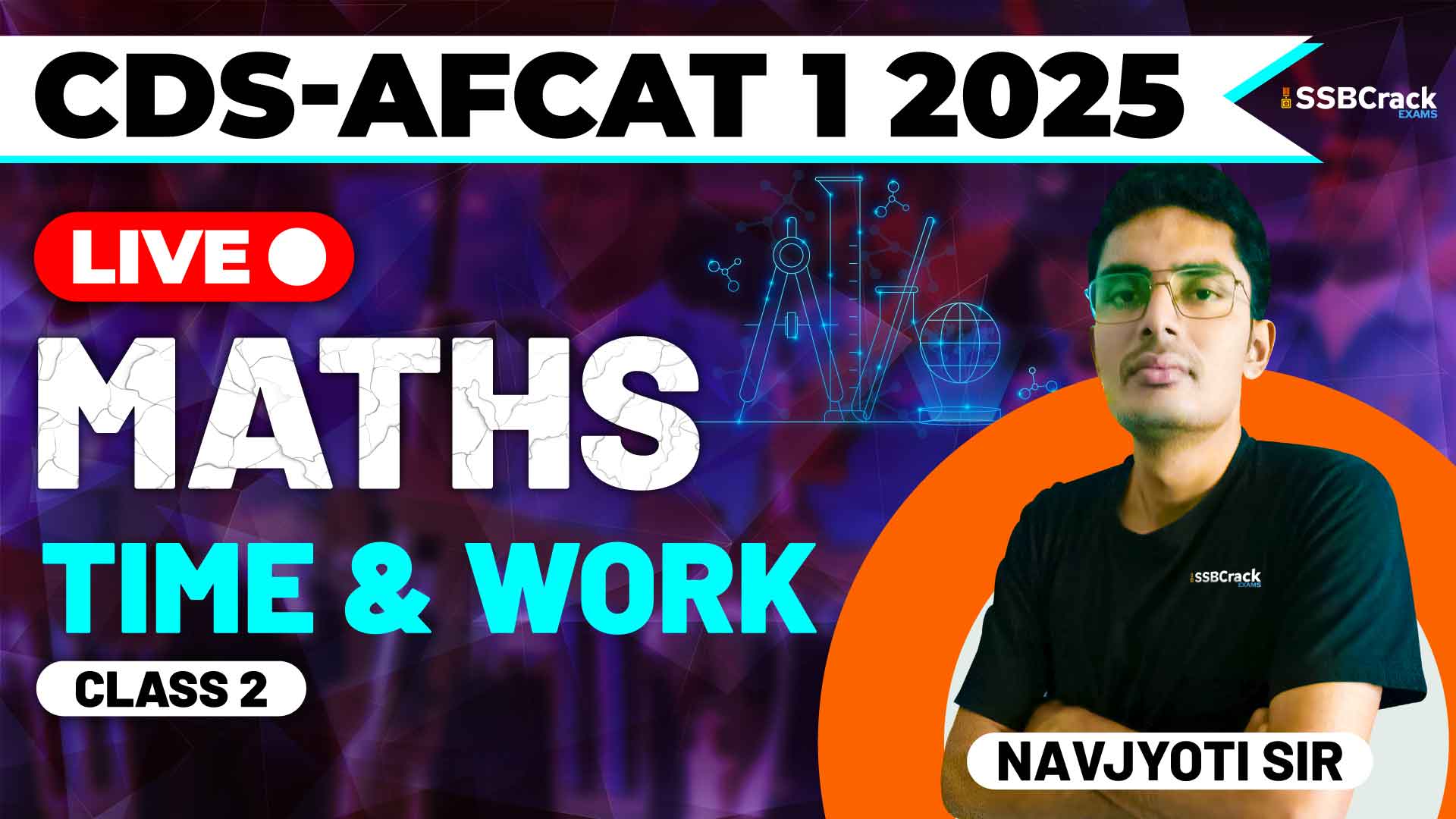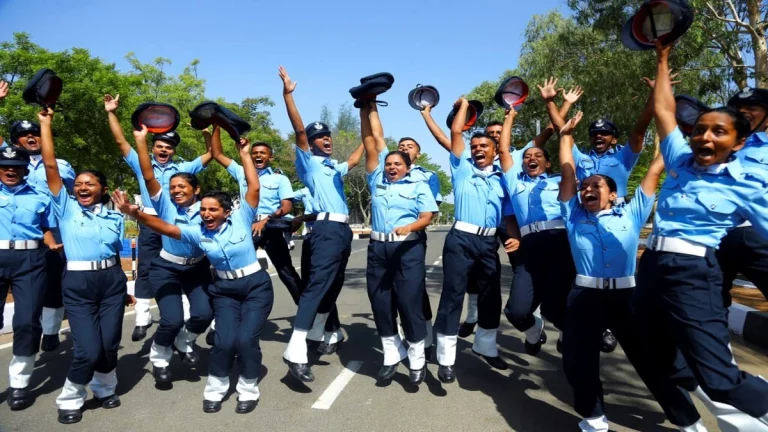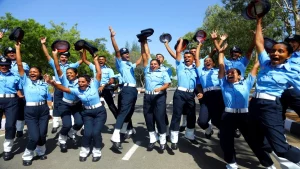In competitive exams like the Combined Defence Services (CDS) and Air Force Common Admission Test (AFCAT), mathematics is an important section that can influence your overall score. One of the topics that regularly features in the maths section is Time and Work. A recent class focused on practicing multiple-choice questions (MCQs) related to this topic, including Pipes and Cisterns, which is a variation of Time and Work problems.
This blog will explore the essential concepts of Time and Work, discuss the key takeaways from the class, and provide strategies to help you effectively prepare for questions on this topic in the CDS and AFCAT exams.
Key Concepts in Time and Work
Time and Work problems revolve around calculating the amount of time required to complete a task when one or more entities (people, machines, or pipes) are working together. The concept seems simple, but questions often include variations that test your understanding and problem-solving skills.
1. Work Efficiency
The basic idea in Time and Work problems is that a task requires a certain amount of work, and different workers (or machines) have different rates of completing that work. For example, if a person can complete a task in a certain number of days, their efficiency is defined as how much of the task they can complete in a single day.
The class emphasized understanding how to calculate efficiency and apply it to scenarios where multiple people work together. For instance, if two workers are assigned the same task, their combined efficiency determines how long it will take them to finish the job together.
2. Work Done Together
In many problems, you will have two or more people working together to complete a task. The combined efficiency of these workers can be added up to calculate how long it will take them to finish the job as a team.
During the class, several MCQs were tackled that focused on the idea of teamwork and combined efforts. For example, if two workers start a task together but one leaves partway through, how does this affect the total time taken? These problems require an understanding of how individual work contributions add up to complete the job.
3. Pipes and Cisterns
Pipes and cisterns problems are a variation of Time and Work, where instead of workers completing a task, pipes are used to fill or empty a tank. Pipes that fill the tank can be thought of as workers doing a task, while pipes that empty the tank are reducing the work done.
The class highlighted problems involving multiple pipes—some filling and some emptying the tank—and how to calculate the net effect on the time taken to fill or empty the tank. These problems are similar to basic Time and Work questions but add an extra layer of complexity due to the opposing forces (filling versus emptying).
4. Alternate Working Conditions
In some problems, entities may work under different conditions, such as taking breaks or working for only part of the day. These variations test your ability to adapt the basic principles of Time and Work to more realistic situations.
The class included practice questions where workers would take turns working on a task or where pipes would open or close at different intervals. These types of problems require careful attention to the timeline and the work done during different phases.
Strategies to Prepare for Time and Work Questions
Mastering Time and Work problems involves more than just understanding the concepts. You also need strategies to solve these problems quickly and accurately, especially when they appear in an exam setting. Here are some tips that were emphasized during the class:
1. Focus on Basic Principles
Before diving into complex problems, ensure you have a firm grasp of the basic principles of Time and Work. Know how to calculate efficiency and understand how work done by multiple entities can be combined. Once you understand the basics, solving more complex questions becomes much easier.
2. Practice the Unitary Method
The unitary method is a powerful tool in solving Time and Work problems. By calculating how much work one entity can complete in one unit of time (usually one day), you can easily scale up to find how much time it will take for a task to be completed by one or more workers.
In the class, this method was frequently applied to solve problems quickly. By focusing on the amount of work done per unit of time, you can simplify even complex problems and avoid lengthy calculations.
3. Solve Pipes and Cisterns Problems Regularly
Pipes and cisterns are a common variation of Time and Work problems that frequently appear in CDS and AFCAT exams. The key to mastering these problems is understanding how to balance the positive work (filling the tank) with the negative work (emptying the tank).
The class stressed the importance of regularly practicing pipes and cisterns problems, as they often trip up candidates during exams. Make sure you are comfortable with calculating the net work done by multiple pipes working together or against each other.
4. Understand Efficiency Comparisons
Many MCQs in Time and Work involve comparing the efficiencies of different workers or machines. If one worker is more efficient than another, how much faster can they complete the task? Practice problems that require you to make these efficiency comparisons and understand how they affect the time taken to complete a task.
The class discussed how to quickly estimate the relative efficiency of different workers and use that information to solve problems. This is a valuable skill, especially in timed exams where quick decisions can save valuable seconds.
5. Pay Attention to Time Intervals
In many Time and Work problems, workers or pipes may not work continuously. For example, one worker might join halfway through the task, or a pipe might only fill the tank for a few hours each day. In such cases, it’s important to track the time intervals carefully and calculate how much work is done during each interval.
The class tackled problems where different entities started or stopped working at different times, and students were encouraged to practice questions with similar conditions. Make sure you are comfortable calculating work done over multiple time intervals.
6. Practice Previous Year Questions
The most effective way to prepare for Time and Work problems in CDS and AFCAT exams is to practice questions from previous years. This helps you understand the types of questions asked and the level of difficulty. It also builds your confidence and improves your problem-solving speed.
In the class, practicing previous year MCQs was emphasized as an essential part of preparation. Solving these questions under timed conditions simulates the exam environment and helps you manage your time better during the actual test.
7. Regular Mock Tests
Finally, take regular mock tests to evaluate your performance and identify areas that need improvement. Mock tests also help in building speed and accuracy, two crucial skills in competitive exams.
The class highlighted the importance of timed practice sessions, where students would solve as many Time and Work problems as possible within a set period. This technique improves both problem-solving efficiency and exam stamina.
Conclusion
Time and Work is a fundamental topic in the mathematics section of the CDS and AFCAT exams. Although the underlying concepts are simple, the variations in problem types, such as multiple workers, pipes and cisterns, and alternate working conditions, can make these questions challenging.
A recent class on this topic focused on practicing MCQs from previous exams, emphasizing the importance of mastering basic principles and applying them to various scenarios. By understanding the core concepts, practicing regularly, and developing effective problem-solving strategies, you can approach Time and Work problems with confidence in the CDS and AFCAT exams.
By incorporating the strategies discussed in this blog—such as focusing on basic principles, practicing pipes and cisterns problems, and solving previous year questions—you will be well-prepared to tackle Time and Work questions effectively.
Good luck with your preparation!



















